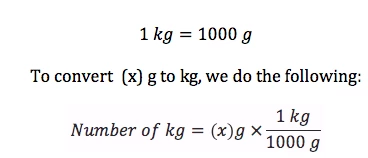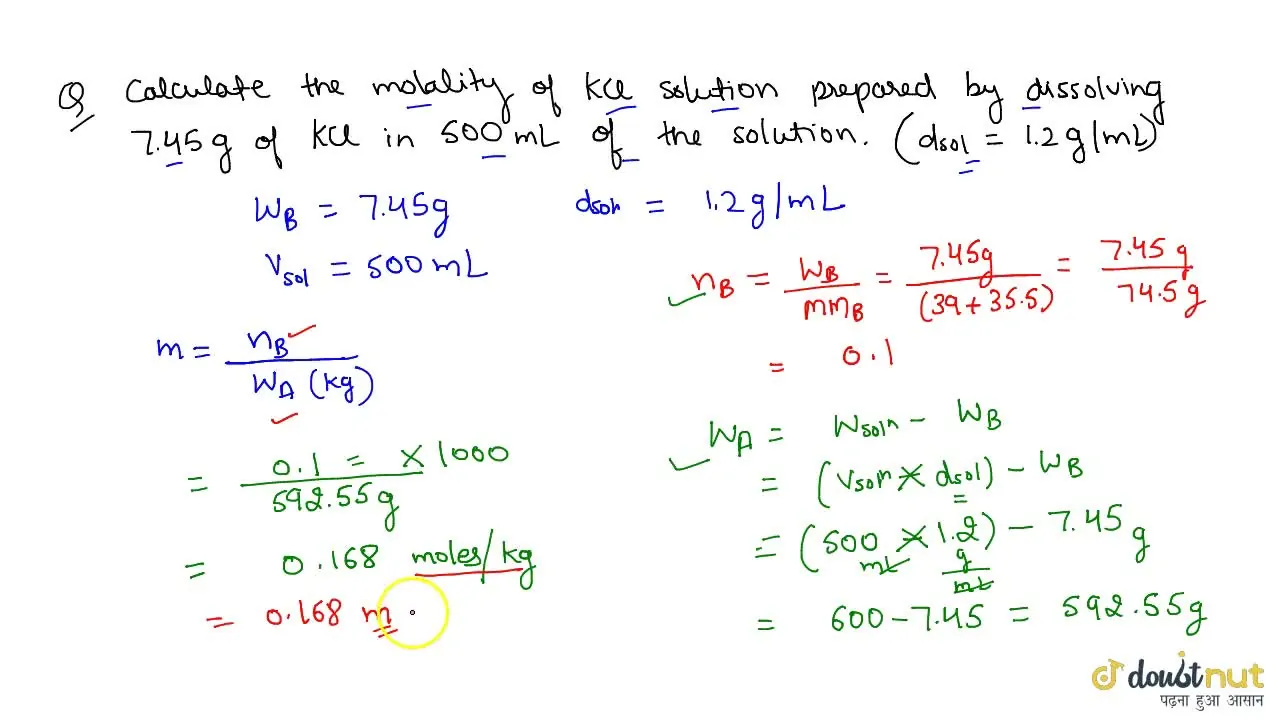Molality
Molality
Definition of Molality
Molality is characterized as the "absolute moles of a solute contained in a kilogram of a solvent."
Molality is also termed as molal concentration. It is a measure of solute concentration in a solution. The solution is composed of two components; solute and solvent. There are various ways to express the grouping of solutions like molarity, molality, typicality, convention, volume rate, weight rate and part per million. The term needs to ascertain the mass of the solvent and moles of solute.
The concentration of a substance is significant in our every day lives. Household items, such as scouring liquor, mouthwash, fade and various cleaning products, can have various concentrations of their active ingredients. At the point when we purchase products, sometimes we take active components, such as when purchasing a skin-treating astringent; it is possible that one per cent or two per cent salicylic acid, so we settle on our decision based on how sensitive our skin is.
Chemists also must know about the concentration of solutions they use during lab procedures. One of the ways concentration is expressed through molality. Molality, symbolized by 'm', is the number of moles of solute per kilograms of solvent.
Formula of Molality
Molality(M)=Number of moles of solute/Mass of solvent in kgs
Molality(M)=g×1000/W×m
The unit of molality expressed in moles of solute per kilogram of solvent. There are times when we are given the mass of the solvent in grams. Since we realize that one kilogram equals 1,000 grams, we can change grams into kilograms. Multiply the number of grams, x, by 1 kilogram more than 1,000 grams.

Sometimes, we are given the number of grams of solute. Molality is the number of moles of solute per kilogram of solvent. To change over the number of grams of solute to moles of solute, we follow the condition: moles of solute = mass of solute/molar mass solute.

To determine the molar mass, we have to check the number of atoms for every component and get the sum of all the atomic masses of the atoms in the chemical compound. We can get these from the periodic table. The molar mass is the sum of the quantity of atoms times the atomic mass of atoms.

Difference Between Molarity and Molality
Molality
Molarity
Unit denoted as (m)
Unit denoted as (M)
Mass of the solvent
Volume of the whole solution
It has units of moles/kg
It has units of moles/liter
Related Video:
Solved Examples
Ex:1: A solution of HCl is 28% by mass & its density is 1.29 gm/ml. Calculate the molality of solution.
Solution:
Mass of solute ‘w’ = 28 gm
Mass of Solution = 100 gm
Mass of Solvent ‘W’= 100-28
= 72 gm = 0.072 kg
m of HCl =35.5 + 1 =36.5
molality = w/ mW(Kg)
=28/(36.5 x 0.072)
molality = 10.65 mole /Kg.
Ex 2. The density of a 3.03 M solution of acetic acid (molecular weight = 60) in water is 1.017 gm/ml. Calculate the molality of the solution.
Solution:
S = Molecular weight × Molarity
= 60 x 3.03
= 181.80 gm/l
Mass of solute (w) = 121.80 gm
volume = 1 liter = 1000 ml
mass of solution = V×density = 1000×2.016
= 2016 gm
mass or weight of solvent =2016-181.80 = 1834.2 gm. =0.1834 Kg.
Molality = w/mW(Kg.)
= 181.8 /(60 x 0.1834)
Molality =16.45 mole/Kg.
Ex 3: Find the molality of a solution where 0.5 grams of toluene (C7H8) is mixed in 225 grams of Benzene(C6H6). Calculate the moles of given solute.
Solution:
Molecular weight of Toluene = C7H8=7×12×+1×8=92 moles/gram
We know, Moles of Toluene=Mass in grams/Molecular weight=5.0 grams/92 grams/mole=0.054 mole.
Hence, the mole of toluene is 0.054 mole.
Thereafter, the kilogram of solvent.225 grams of Benzene =0.225 kilogram
Now,
Molality=Moles of Toluene/Mass of Benzene
=0.054 moles/0.225 kg
Molality(m)=0.24 m
Ex 4: Density of a 3.05 M solution of acetic acid in water is 2.01 g/mL. Find the molality of the solution .
Solution:
Molarity of acetic acid solution = 3.05 M
Moles of acetic acid in 1 Litre = 3.05 mol
Mass of acetic acid (solute) in 1 Litre solution = 3.05 mol (no. of moles) x 60 g mol-1 (molecular mass of acetic acid)= 183 gm
Density (d )= mass of solution / volume of solution
Thus,
mass of solution = d x v = 2.01 g mL-1 x 1000 mL = 2010 gm
We know, mass of solvent = mass of solution - mass of solute = 2010 - 183 = 1827 g = 1.827 kg
molality, (m)= no. of moles / mass of solvent (in Kg) = 3.05 mol / 1.827 kg
molality = 1.669 mol kg-1
Frequently Asked Questions on Molality
What do you mean by Molality?
Molality is characterized as the number of solvent moles per kilogram. Molality's SI unit is mol/kg. A solution with a 5 molar/kg molality is regularly characterized as "5 molal" or "5 m." However, it is currently favoured after the unit SI system, mol/kg or a similar SI unit.
What is molality and molarity?
Molarity is the number of moles of a substance for each liter of solution, also called known as molar concentration. A capital M signifies solutions marked with molar concentration. A 1.0 M solution contains 1 mole of solvent for each liter of solution. Molality is the number of solvent moles per kilogram.
What is the advantage of molarity over molality?
For all intents and purposes testing in a research facility is better. Even though because of temperature differences influencing volume in molarity and not molality, it is not as trustworthy as molality. Molarity inaccuracy sources from volume estimation are also more prominent than errors from a molality balance.
What is the use of molality?
Molality is the supported fixation transmission approach because the solution's mass of solute and solvent does not vary.
How is molarity useful?
Molarity (M) is one of the most widely recognized units used to determine the concentration of a solution, representing the number of moles of solute per liter of solution (moles/Liter).
Important Chapters:



Molality
Molarity
Unit denoted as (m)
Unit denoted as (M)
Mass of the solvent
Volume of the whole solution
It has units of moles/kg
It has units of moles/liter
Solution:
Mass of Solvent ‘W’= 100-28
= 72 gm = 0.072 kg
Solution:
= 60 x 3.03
= 181.80 gm/l
Mass of solute (w) = 121.80 gm
volume = 1 liter = 1000 ml
mass of solution = V×density = 1000×2.016
= 2016 gm
Similar Questions
Molal elevation constant and molal depresion constant for water respectively(in.(∘)C/m) are
View SolutionMolal elevation constant.
View SolutionMolal elevation constant and molal depression constant of water respectively (in K m−1) are
View SolutionMolal elevation constant Kb for water is 0.52K/m.0.1 molal solution of NaCl will boil at
View SolutionMolal elevation constant is elevation in boiling point produced by
View SolutionParts Per Million(PPM) || Parts Per Billion (PPB) ||Solved Numerical Question || Conversion OF 1 Unit into Another || Meaning OF Molal/Semi-molal/Deci-molal/Centi-molal
View SolutionThe molal cryoscopic constant for water is
View SolutionDefine molal elevation constant.
View SolutionDefine molal elevation constant.
View SolutionThe boiling point of 0.1 molal aqueous solution of urea is 100.18∘C atm. The molal elevation constant of water is
View Solution


